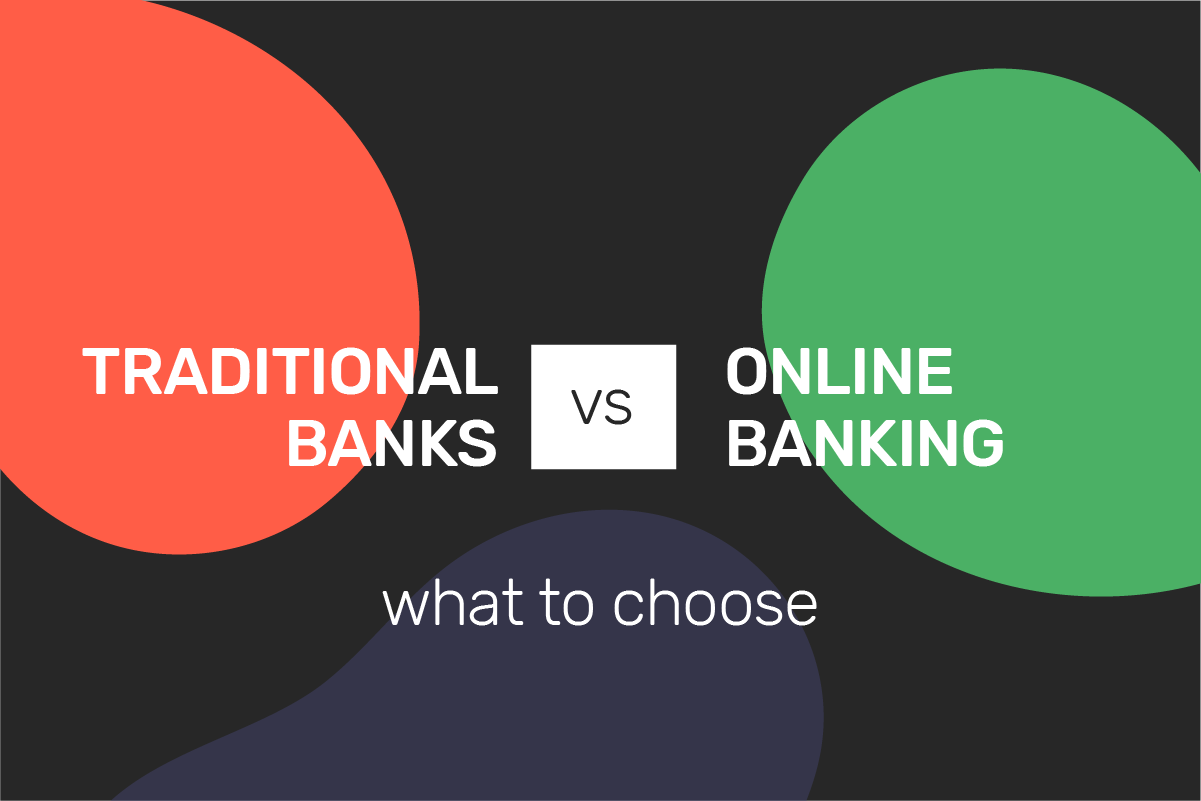Hey there! Ready to dive into a controversial take on why mainstream banks, incumbent banks, fintechs, and neobanks are still relevant? Buckle up, because we’re about to challenge some widely held beliefs.
In today’s fast-paced world, mainstream banks and incumbent banks are facing competition from fintechs and neobanks. With technology taking over every aspect of our lives, it’s easy to assume that traditional banking has become obsolete. But hold your horses! Let me tell you why that assumption couldn’t be further from the truth.
Traditional banking, including neobanks and fintechs, plays a vital role in providing stability and trust to our financial markets. Sure, technological advancements have revolutionized the way we handle money, but nothing beats the good ol’ brick-and-mortar banks with their federal deposit insurance.
Think about it for a moment. Traditional retail banks offer a wide range of services in their consumer banking division that cater to diverse customer needs. Whether it’s managing savings accounts, offering loans for homes or businesses, or providing personalized financial advice – they’ve got it all covered. And let’s not forget about interest rates! Traditional retail banks have been around long enough to understand how markets work and can offer competitive rates that neobanks might struggle to match.
But here’s the real kicker – credibility and reliability. With their long-standing presence in communities across the globe, traditional retail banking institutions have built a reputation for being trustworthy consumer banking institutions. They aren’t just faceless entities; they’re part of our neighborhoods and local economies. That ring of familiarity adds an extra layer of comfort when entrusting them with our financial relationships and our hard-earned money.
Now I know what you might be thinking – isn’t this debate already settled? Well, not quite! While neobanks and fintechs are gaining popularity, traditional banks still hold the upper hand in terms of value and expertise in trading and cryptocurrencies. So before you write off those old charters as relics of the past, consider the bottom line: traditional banking remains an essential pillar in today’s financial landscape.
In the following sections, we’ll delve deeper into the reasons why traditional banking, including neobanks, is far from being outdated. From the personalized services they offer to their unparalleled market knowledge in trading and cryptocurrencies, you’ll soon see that these banks are here to stay and continue to impact the bottom line. So stick around and let’s explore this intriguing topic together!
Role of Traditional Banks in Ensuring Financial Stability and Regulatory Compliance
Traditional banks, despite the rise of neobanks and the popularity of cryptocurrencies and trading, continue to play a pivotal role in ensuring financial stability and regulatory compliance. Their adherence to strict regulations not only contributes to the stability of the financial sector but also protects customers’ funds and maintains market integrity. Let’s delve into the key reasons why traditional banks, with their experienced managers, remain relevant in today’s ever-evolving financial landscape.
Adhering to Strict Regulations for Financial Stability
Bank supervisors have implemented a comprehensive framework of regulations that traditional banks, including neobanks and banking divisions, must follow. These regulations are designed to safeguard the interests of customers, maintain stable economic conditions, and prevent potential risks that could arise from the shadow banking system. By adhering to these regulations, incumbent banks and their managers contribute significantly to overall financial stability.
One crucial aspect of risk management in traditional banks is their robust practices. These practices help the banking division identify and mitigate potential threats before they become systemic risks. Through stringent risk assessment processes, managers ensure the security and resilience of operations against market fluctuations or unexpected events. This is especially important in the context of shadow banking and the investment division.
Moreover, traditional banks, including their banking division, are required by regulatory authorities to maintain adequate capital reserves. This ensures that they possess enough resources to absorb losses during challenging economic times without jeopardizing their ability to meet depositors’ demands or fulfill loan obligations. The presence of such capital buffers adds an extra layer of protection against financial instability in the shadow banking system.
Monitoring Transactions and Preventing Money Laundering Activities
Traditional banks, including their banking division, have long been at the forefront of detecting suspicious transactions. They play a vital role in leveraging advanced monitoring systems to flag potentially illicit activities. This is especially important in the context of shadow banking, where managers and charters may pose additional risks.
These traditional banks, operating within the banking division, comply with anti-money laundering (AML) laws and know-your-customer (KYC) requirements diligently. By conducting thorough due diligence on their customers, the managers at these banks can verify identities, assess transaction patterns, and identify any unusual or suspicious behavior promptly. This ensures the stability of the banking division and helps prevent risks associated with the shadow banking system. Additionally, advancements in AI technology are assisting these managers in carrying out these tasks more efficiently.
Through continuous monitoring efforts, traditional banks, including their banking division and investment division, can detect and report suspicious activities related to shadow banking to the appropriate authorities, contributing to the fight against money laundering and terrorist financing. Their role as gatekeepers in preventing illicit financial flows within their charters is crucial for maintaining the integrity of the global financial system.
Regulatory Compliance: Protecting Customers’ Funds and Market Integrity
One significant advantage of traditional banks is their commitment to regulatory compliance in their banking division. By adhering to a comprehensive set of regulations, these institutions protect customers’ funds and maintain market integrity in the shadow banking system. This commitment to compliance is particularly important when considering the investment division, where the debate surrounding regulatory oversight is ongoing.
For instance, deposit insurance schemes are often mandated by regulators for traditional banks in order to provide an additional layer of protection for customer deposits up to a certain threshold, safeguarding individuals’ savings even in the event of a bank failure. This safety net instills confidence among depositors and ensures that they can access their funds when needed, which is particularly important in the context of the shadow banking system. However, the debate regarding the effectiveness of such schemes continues, especially within the investment division.
Furthermore, regulatory compliance helps prevent fraudulent activities such as unauthorized transactions or identity theft in the shadow banking industry. Traditional banks, including their investment divisions, implement stringent security measures to protect customers’ sensitive information from cyber threats. They invest heavily in state-of-the-art technology infrastructure, including robust firewalls, encryption protocols, and multi-factor authentication systems, all aimed at safeguarding customer data amidst ongoing debate surrounding shadow banking.
Leveraging Consumer Trust: How Traditional Banks Benefit from Established Relationships
Traditional banks have long been a cornerstone of the consumer banking industry, and despite the rise of digital banking alternatives, they continue to maintain their relevance in the investment division. One key factor that sets traditional banks apart is their ability to leverage established relationships with customers, allowing them to benefit from consumer trust in a way that digital-only providers struggle to replicate in the debate.
Building Strong Relationships: The Foundation of Trust and Loyalty
Traditional banks have spent years cultivating strong relationships with their customers, gaining trust and loyalty through personalized service and a deep understanding of individual needs. Unlike digital-only providers, who often lack face-to-face interactions, traditional banks have built a reputation as reliable partners in managing financial matters. This has led to a debate on whether investments in AI technology should be made to enhance the customer experience and improve efficiency within the investment division.
The debate surrounding the value of these established relationships cannot be overstated. Customers appreciate the human touch that traditional banks provide, as it reassures them that their financial well-being is in capable hands. Whether it’s discussing complex credit risk assessments or offering tailored advice on investment opportunities, traditional banks are able to offer a level of service that goes beyond what can be achieved through automated systems, thereby reducing division among customers.
Tailored Financial Solutions: Meeting Individual Needs
One of the key advantages of leveraging established relationships in the investment division is the ability for traditional banks to offer tailored financial solutions. By having an intimate knowledge of their customers’ financial history and goals, these banks can create personalized offerings that cater specifically to individual needs, sparking debate among investors.
For example, let’s consider a customer who has been with an incumbent bank for several years. The mainstream bank has access to detailed information about this customer’s credit history and spending patterns. Armed with this knowledge, the universal bank can provide targeted recommendations on credit products that suit the customer’s unique circumstances. This level of customization not only enhances customer satisfaction but also helps mitigate potential risks associated with lending. Additionally, shadow banks may not have the same level of access to this information, making them less able to provide personalized recommendations.
Expanding Product Offerings: Retaining a Competitive Edge
The debate surrounding consumer trust is crucial for traditional banks to navigate the division and expand their product offerings. Trust enables banks to maintain a competitive edge in the market by encouraging customers to explore additional services offered by the institution rather than seeking alternatives.
For instance, incumbent banks that have established a strong relationship with their customers may introduce new products such as insurance or investment options. With the foundation of trust already in place, customers are more inclined to consider these offerings from their familiar banking partner rather than venturing into unfamiliar territory with shadow banks or other companies.
This ability to retain existing customers while expanding market share is a significant advantage for traditional banks. By leveraging consumer trust, these institutions can continue to grow and adapt to changing industry dynamics without losing their customer base. This division allows traditional banks to maintain their customer base while expanding into new markets.
FinTech Disruption: Reshaping the Banking Industry and Its Impact on Customers
The rise of FinTech has brought about a wave of innovation in the banking industry, challenging traditional banking models and transforming the way customers access financial services. With user-friendly mobile applications and online platforms, FinTech companies offer convenient access to banking services that are changing the game for customers worldwide. This disruption has also led to the emergence of shadow banks, creating a division in the industry.
One of the key advantages offered by FinTech is its ability to provide faster transactions. The division between traditional banking and FinTech has eliminated the need for waiting in long queues at brick-and-mortar banks or dealing with slow processing times. With just a few taps on their smartphones, customers can now transfer funds, make payments, and manage their accounts seamlessly. This speed and efficiency have revolutionized the way people handle their finances, saving them valuable time and effort.
Another significant benefit of FinTech is its ability to offer lower fees compared to traditional banking institutions. By utilizing digital platforms and automated processes, these innovative companies can cut down on overhead costs associated with physical branches. As a result, they pass on these savings to customers in the form of reduced fees or even fee-free services. This cost-effectiveness appeals to many individuals who are looking for more affordable options, especially those who are interested in shadow banks or division.
Convenience is another aspect where FinTech shines brightly. Traditional banks often operate within specific working hours, making it challenging for some customers to access their services outside those time frames. However, with fintechs available 24/7 through mobile apps or websites, customers can perform division transactions whenever it suits them best—whether it’s late at night or during weekends. This flexibility empowers individuals to take control of their finances without being restricted by traditional banking schedules.
Despite these undeniable advantages offered by FinTech companies, there remains a significant portion of customers who still prefer traditional banking institutions due to reasons such as security and personal touch. Traditional banks have built trust over generations with robust security measures in place that protect customers’ funds and personal information. Some individuals may feel more secure knowing that their money is held by an established institution with a long-standing reputation, creating a division between those who prefer FinTech and those who prefer traditional banks.
Moreover, traditional banks often provide a personal touch that some customers find comforting. The ability to visit a physical branch and interact face-to-face with bank representatives can create a sense of trust and reliability. This personalized service allows customers to discuss their financial goals, seek advice, or resolve any issues they may encounter within the division. For many, the human connection provided by traditional banking institutions is an essential aspect of their banking experience.
Exploring Implications for Financial Stability: Comparing Traditional Banks and FinTech
In today’s rapidly evolving financial landscape, the rise of FinTech and shadow banks has sparked a heated debate on whether traditional banking is still relevant. While it is true that FinTech brings innovation and convenience to the table, it also poses potential risks that cannot be ignored.
Risks of Cybersecurity Threats and Data Privacy Concerns
One of the key concerns surrounding FinTech is the vulnerability it introduces in terms of cybersecurity threats and data privacy. As technology advances, so do the methods employed by cybercriminals to exploit vulnerabilities in digital systems. Unlike traditional banks, which have established robust security measures over decades of operation, some FinTech companies may lack sufficient expertise or resources to effectively combat these threats.
The interconnectedness of our digital world means that any breach in security can have far-reaching consequences for both individuals and the overall financial stability. Imagine a scenario where a significant number of individuals entrust their finances to a particular FinTech platform, which is regulated by bank supervisors, that falls victim to a cyber attack. The resulting loss or compromise of sensitive personal information could have severe repercussions for both individuals and the overall financial stability, especially considering the role of shadow banks in the financial system.
While it is essential to acknowledge these risks, it does not mean that traditional banks are immune from cyber threats. However, their long-standing presence in the industry has enabled them to develop comprehensive security frameworks and protocols. This track record instills confidence among customers who value stability and trustworthiness when entrusting their hard-earned money.
Capital Reserves: A Safety Net during Economic Downturns
Another aspect worth considering when evaluating the relevance of traditional banking versus FinTech is capital reserves. Traditional banks are subject to regulatory requirements that mandate them to maintain adequate capital buffers as a safeguard against unforeseen economic downturns or financial crises.
In contrast, some FinTech companies, which are not subject to the same regulations and oversight as traditional banks, including bank supervisors, may not possess similar capital reserves due to the nature of their business models. While this allows them to operate with agility and flexibility, it also exposes them to greater vulnerability during times of economic turbulence. A sudden downturn in the market could leave these shadow banks struggling to weather the storm, potentially leading to financial instability.
The importance of capital reserves became evident during the global financial crisis of 2008. Traditional banks, armed with substantial reserves, were able to absorb losses and continue functioning even amidst the chaos. This resilience played a vital role in stabilizing the financial system and preventing a complete collapse.
Striking a Balance: Innovation and Stability
Rather than viewing traditional banking, shadow banks, and FinTech as adversaries locked in a battle for supremacy, it is crucial to recognize that they can coexist harmoniously within our financial ecosystem. Each brings unique strengths that contribute to overall stability while fostering innovation.
Traditional banks provide a solid foundation built on decades of experience, proven risk management strategies, and established relationships with regulators. Their ability to withstand financial crises instills confidence among consumers who prioritize stability above all else.
On the other hand, FinTech introduces disruptive technologies that challenge existing norms and offer innovative solutions for various financial needs. By leveraging cutting-edge advancements like blockchain technology or artificial intelligence-powered algorithms, FinTech companies push boundaries and drive progress within the industry. This progress is closely monitored by bank supervisors to ensure the stability of the financial system. Additionally, FinTech has also led to the rise of shadow banks, which operate outside the traditional banking sector. However, the universal bank model remains a significant player in the industry, adapting to incorporate FinTech advancements and maintain its competitive edge.
This coexistence creates a balanced financial ecosystem where innovation thrives without compromising stability. It allows individuals access to modern conveniences offered by FinTech while relying on traditional banks’ sturdy infrastructure.
Regulatory Policies: Balancing Innovation and Risk Management in the Banking Sector
Regulators face the challenge of creating policies that foster innovation while safeguarding against potential risks posed by shadow banks. In today’s rapidly evolving financial sector, where technology is disrupting traditional banking practices, striking the right balance between encouraging FinTech growth and maintaining consumer protection is crucial.
The banking sector operates under a complex web of regulatory accountability to ensure prudential soundness and protect the interests of both consumers and investors. Regulators, such as the Federal Reserve and the Federal Deposit Insurance Corporation (FDIC), have a responsibility to mitigate risks associated with financial institutions. However, with the emergence of new risks brought about by technological advancements and innovative business models, regulators must adapt their policies accordingly.
One area where regulatory frameworks play a vital role is in ensuring fair competition between traditional banks and emerging FinTech players. As these new entrants disrupt established banking practices, it becomes essential for regulators to create an even playing field that allows innovation to thrive while protecting consumers from potential harm. By setting clear guidelines on issues like data privacy policies, funding requirements, and risk management practices, regulators can promote healthy competition within the industry.
Collaborative efforts between regulators, traditional banks, and FinTech companies can lead to effective policy development. It is crucial for all stakeholders to come together and engage in constructive dialogue to address challenges posed by technological advancements. By leveraging their unique perspectives and expertise, they can collectively identify potential risks associated with new financial products or services and develop appropriate safeguards.
To illustrate this collaborative approach further, let’s consider how regulators are managing risks associated with industrial loan companies (ILCs). ILCs are non-bank financial firms that offer banking services without being subject to the same regulations as traditional banks. This has raised concerns about potential gaps in oversight that could expose consumers to undue risks. To address this issue proactively, regulators have engaged in extensive research and consultation with industry experts to assess the potential impact of ILCs on financial stability. This collaborative effort ensures that policies are developed with a comprehensive understanding of the risks involved, enabling regulators to strike a balance between innovation and risk management.
Moreover, regulatory policies also play a crucial role in managing market risk. As financial markets become increasingly interconnected, the potential for systemic risks grows. Regulators must establish frameworks that monitor and mitigate these risks to maintain stability within the banking sector. By implementing measures such as stress tests and capital requirements, regulators can ensure that financial institutions have sufficient buffers to withstand market shocks.
Adapting to Change: How Traditional Banks Can Embrace Technology and Stay Relevant
Embracing technology for enhanced operational efficiency
Traditional banks have long been the backbone of the financial industry, but in today’s rapidly evolving landscape, they must adapt to change in order to stay relevant. One key aspect of this adaptation is embracing technology. By leveraging the power of technological advancements, traditional banks can not only enhance their operational efficiency but also meet the evolving expectations of their customers.
Investing in digital transformation is crucial for traditional banks looking to offer seamless online banking experiences. With technology companies constantly pushing boundaries, customers now expect convenience and accessibility at their fingertips. By developing user-friendly mobile applications and online platforms, traditional banks can provide their customers with a convenient way to access their accounts, make transactions, and manage finances from anywhere at any time.
Furthermore, adopting advanced analytics tools can empower traditional banks with valuable insights for better decision-making. Artificial intelligence (AI) and machine learning algorithms can analyze vast amounts of data to identify patterns and trends that would otherwise go unnoticed. This enables banks to make more informed decisions regarding risk management, fraud detection, personalized marketing strategies, and even product development.
Collaboration with FinTech firms as a strategic move
While embracing technology is essential for traditional banks’ survival in the digital age, it does not mean compromising their core strengths. Collaboration with FinTech firms presents an opportunity for these banks to leverage technological advancements without losing sight of what makes them unique.
By partnering with FinTech startups or established companies specializing in innovative financial solutions, traditional banks can tap into cutting-edge technologies while retaining their expertise in regulatory compliance and customer trust. This collaboration allows them to offer new services such as robo-advisory platforms or peer-to-peer lending options that cater to changing customer preferences.
Moreover, working hand-in-hand with FinTech firms provides traditional banks access to a diverse pool of talent skilled in emerging technologies like blockchain, biometrics, and data analytics. This infusion of fresh perspectives can foster a culture of innovation within traditional banks, encouraging them to think outside the box and explore new avenues for growth.
Embracing change as a necessity
In today’s fast-paced world, embracing change is not merely an option; it is a necessity for traditional banks to remain relevant. The rise of digital banking and the increasing popularity of alternative financial services have disrupted the industry landscape. To stay competitive, traditional banks must adapt their business models and embrace technology-driven solutions.
While some may argue that traditional banks are becoming obsolete in the face of FinTech disruption, they possess inherent strengths that cannot be easily replicated by technology companies. These strengths include established customer relationships, robust risk management frameworks, and regulatory expertise. By embracing technology while leveraging these core strengths, traditional banks can strike a balance between innovation and stability.
Embracing a Hybrid Future – The Continued Significance of Traditional Banking
Traditional banking has long been a pillar of the financial industry, and despite the rise of innovative technologies and disruptive FinTech companies, its relevance remains steadfast.
Role of Traditional Banks in Ensuring Financial Stability and Regulatory Compliance
One key aspect where traditional banks excel is in ensuring financial stability and regulatory compliance. These institutions have established frameworks that adhere to stringent regulations, safeguarding the interests of both customers and the broader economy. By closely monitoring transactions, conducting due diligence on borrowers, and implementing robust risk management practices, traditional banks contribute to maintaining stability within the financial system.
Leveraging Consumer Trust: How Traditional Banks Benefit from Established Relationships
Another significant advantage enjoyed by traditional banks is their ability to leverage consumer trust through established relationships. Over time, these institutions have built strong bonds with their customers based on reliability and familiarity. Such trust is not easily replicated by new entrants into the market. Customers often value the personal touch provided by traditional banks, appreciating face-to-face interactions with knowledgeable staff who understand their unique financial needs.
FinTech Disruption: Reshaping the Banking Industry and Its Impact on Customers
The emergence of FinTech has undoubtedly disrupted the banking industry by introducing innovative solutions that challenge traditional models. However, it is important to recognize that while FinTech offers convenience and efficiency through digital platforms, it may not fully replace all aspects of traditional banking services. Many customers still rely on physical branches for complex transactions or seek personalized advice from experienced bankers.
Exploring Implications for Financial Stability: Comparing Traditional Banks and FinTech
While FinTech brings undeniable benefits such as increased accessibility and streamlined processes, it also presents potential risks related to data security breaches or technological failures. Traditional banks offer a more established framework for mitigating these risks, ensuring the overall stability of the financial system. Striking a balance between innovation and risk management is crucial to maintain a robust banking sector that can withstand unforeseen challenges.
Regulatory Policies: Balancing Innovation and Risk Management in the Banking Sector
Regulatory policies play a vital role in shaping the future of traditional banking. Governments and regulatory bodies must strike a delicate balance between fostering innovation and protecting consumers’ interests. Encouraging collaboration between traditional banks and FinTech companies can lead to exciting hybrid solutions that combine the strengths of both sectors while mitigating potential risks.
Adapting to Change: How Traditional Banks Can Embrace Technology and Stay Relevant
To remain relevant in this rapidly evolving landscape, traditional banks need to adapt and embrace technology. By investing in digital infrastructure, enhancing online services, and exploring partnerships with FinTech firms, they can offer customers greater convenience without compromising on trust or security. This hybrid approach allows traditional banks to leverage their existing strengths while harnessing the power of technological advancements.
In conclusion, despite the disruptive influence of FinTech, traditional banking continues to hold significant relevance in today’s financial industry. Its ability to ensure financial stability, leverage consumer trust, and navigate regulatory complexities sets it apart from emerging alternatives. By embracing a hybrid future that combines established practices with innovative technologies, traditional banks can continue serving customers effectively while remaining at the forefront of an evolving industry.
FAQs
Q: Are traditional banks more secure than FinTech companies?
Traditional banks have well-established frameworks for ensuring security and compliance with regulations. They invest heavily in robust risk management practices and have extensive experience dealing with potential threats. While FinTech companies also prioritize security measures, their relative novelty may present additional risks that are yet to be fully addressed.
Q: Can I still visit physical branches if I choose a traditional bank?
Yes! Traditional banks often maintain physical branches where you can conduct complex transactions or seek personalized advice from experienced bankers. These branches provide a valuable avenue for face-to-face interactions and cater to customers who prefer in-person assistance.
Q: How do traditional banks benefit from established relationships with customers?
Traditional banks have built long-standing relationships with their customers, fostering trust through reliability and familiarity. Customers value the personal touch provided by traditional banks and appreciate the expertise of bankers who understand their unique financial needs.
Q: What advantages does FinTech offer compared to traditional banking?
FinTech offers convenience and efficiency through digital platforms, allowing for quick and easy access to financial services. It streamlines processes, reduces paperwork, and provides innovative solutions such as mobile banking apps or online payment systems.
Q: Can traditional banks adapt to technological advancements?
Absolutely! Traditional banks can adapt by investing in digital infrastructure, enhancing online services, and exploring partnerships with FinTech companies. By embracing technology while retaining their core strengths, they can stay relevant in an evolving industry.









